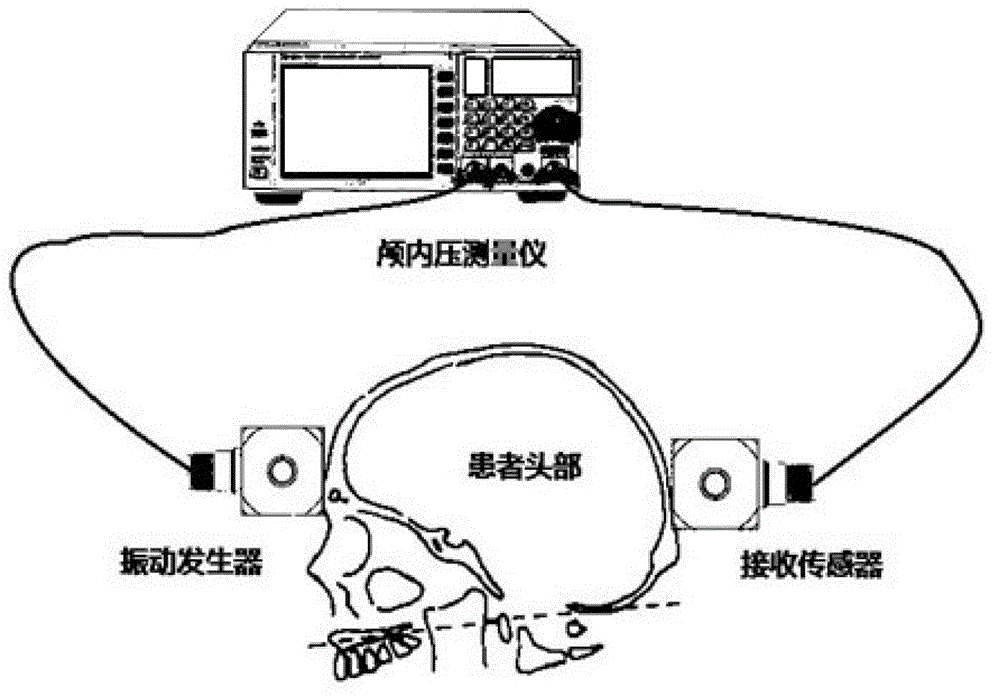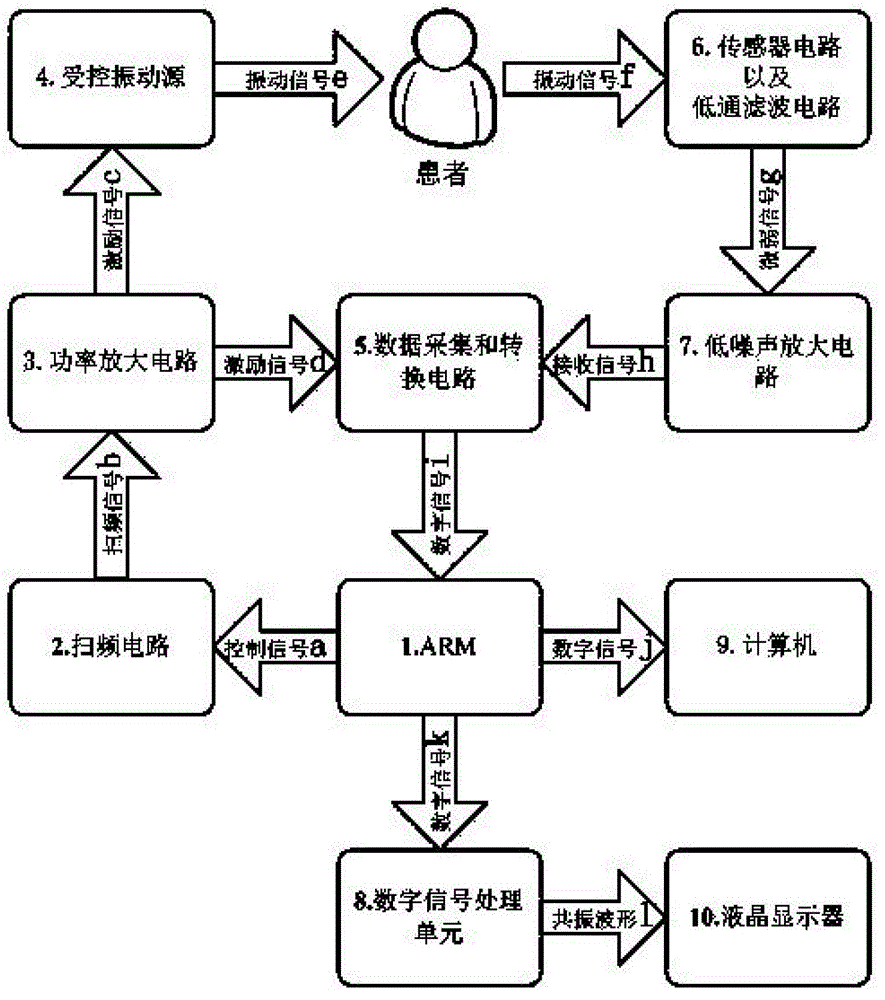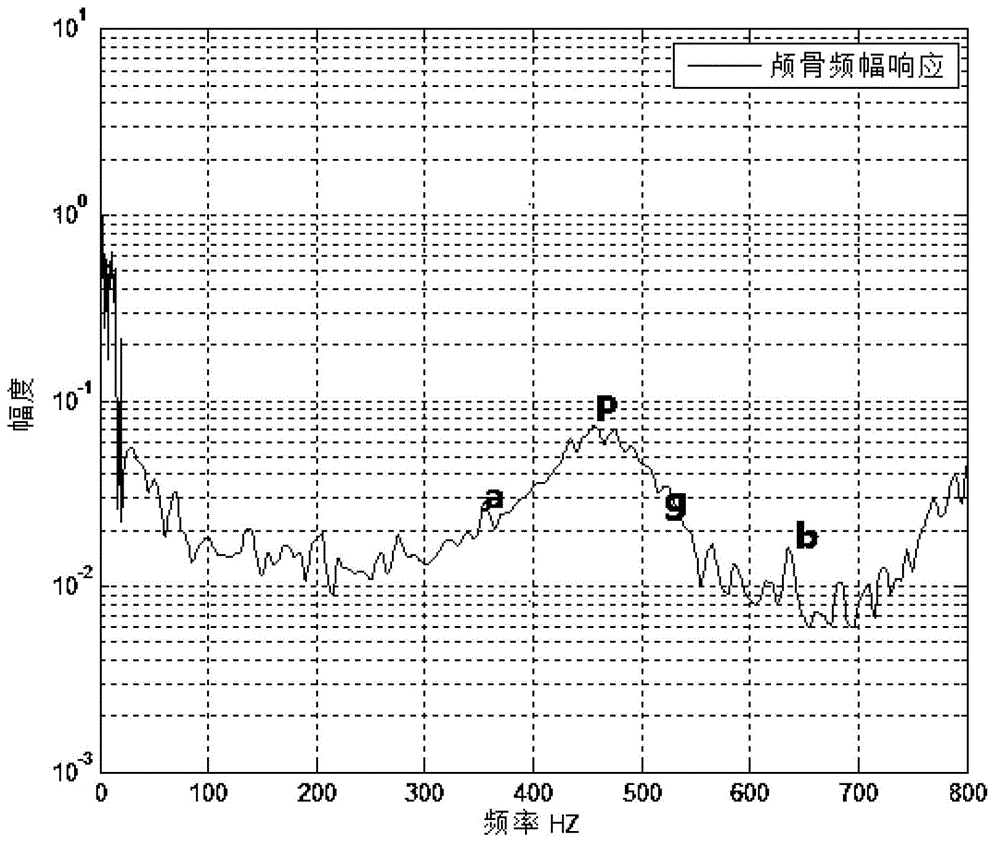Non-invasive intracranial pressure measurement method and measurement instrument
A measurement method and technology of intracranial pressure, applied in the field of biomedicine, to achieve accurate and targeted results, safe use process, and elimination of measurement errors
- Summary
- Abstract
- Description
- Claims
- Application Information
AI Technical Summary
Problems solved by technology
Method used
Image
Examples
Embodiment Construction
[0048] Such as figure 1 As shown, a non-invasive intracranial pressure measurement method includes the following implementation steps:
[0049] 1. Make the frontal bone of the patient's head contact with a controlled vibration generating device, which is driven by the vibration source to generate a vibration signal with a constant amplitude of resonance and frequency sufficient to cover the patient's head;
[0050] 2. Make the occipital bone on the opposite side of the frontal bone of the patient contact the vibration signal receiving sensor, and the signal receiving sensor receives the vibration signal transmitted through the skull and converts it into an electrical signal and transmits it to the non-invasive intracranial pressure measuring instrument;
[0051] 3. With the non-invasive intracranial pressure measuring instrument, the vibration signal of the vibration source and the feedback signal received by the above sensor are processed by the analysis and detection algorit...
PUM
 Login to View More
Login to View More Abstract
Description
Claims
Application Information
 Login to View More
Login to View More - R&D
- Intellectual Property
- Life Sciences
- Materials
- Tech Scout
- Unparalleled Data Quality
- Higher Quality Content
- 60% Fewer Hallucinations
Browse by: Latest US Patents, China's latest patents, Technical Efficacy Thesaurus, Application Domain, Technology Topic, Popular Technical Reports.
© 2025 PatSnap. All rights reserved.Legal|Privacy policy|Modern Slavery Act Transparency Statement|Sitemap|About US| Contact US: help@patsnap.com



